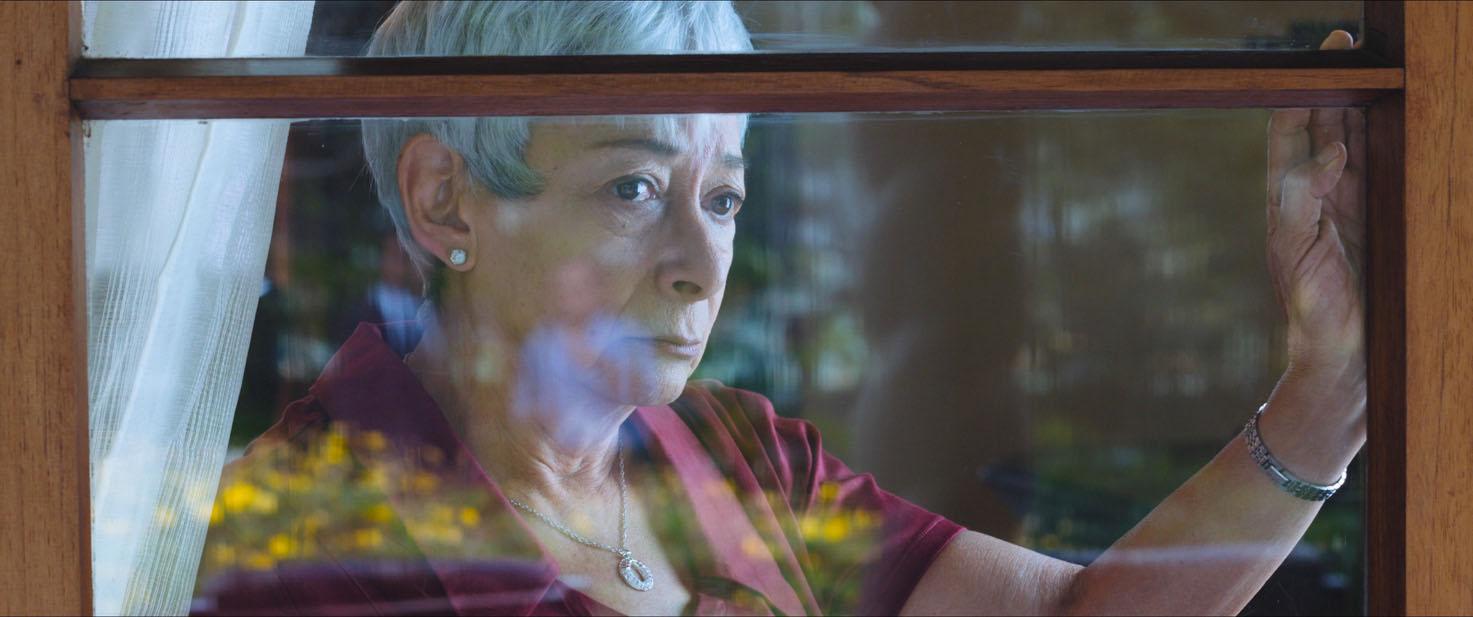More than 100 people were in attendance for the screening of Hilda Hidalgo Xirinachs’ film “Violeta Al Fin” in the Peters Education Center Auditorium on April 12.
The 85-minute film is dedicated to Hildalgo’s mother–one of her inspirations to create the film.
Hidalgo said her idea for the film began when she took a picture of her mother at an abandoned train station. Her mother’s silhouette contrasted with the symmetry of her surroundings, inspiring Hidalgo to create the story of an elderly woman.
“It’s a film about women like her who had to deal with a society that limited their options and their decision making,” Hidalgo said.
The film’s main character,Violeta, is a 72-year-old woman who has always struggled to fight for her own independence. After divorcing her husband at an old age, Violeta faces discrimination at her Catholic church, where she cannot participate in communion because her religion opposes divorce.
In the movie, Violeta has a desire to make her house, which was her mother’s house, into a guesthouse. Against her daughter and son’s advice, Violeta rents a room to her swimming instructor, Francisco Rivera, played by actor Gustavo Sanchez Parra.
Violeta’s swimming lessons are one of the central aspects of the movie. The film starts with Violeta under the water and ends with Violeta swimming and smiling.
Her lessons are representative of Violeta’s desire to do something that is not expected from an old person. It represents her wanting to be free.
During the movie, Violeta gets a cramp while swimming and has to be rescued by Francisco. She says she fears that because she is old, she has become useless.
Hidalgo said she wanted to portray the discrimination that old people often feel when others tell them what they should and should not to do.
Violeta, played by Eugenia Chaverri, finds out that the bank will take away her house because her ex-husband used it for a business that didn’t work out. Violeta tries to collect the 60 million colones to pay the bank (around $99,663) by selling an old car, raffling jewelry with her friends and finding a business partner.
However, the bank does not take Violeta’s money and offers to finance her debt. When she finally has to move out, Violeta plugs a wet blender into an outlet in her kitchen, which causes a fire.
The audience at the auditorium watched with astonishment at how Violeta’s house burned down, leaving her with only a photo album.
“Burning the house is freeing Violeta,” was one of the audience members’ interpretations when Hidalgo asked what everyone thought about the film.
Hidalgo said that she used fire and water as liberating elements in her film.
Some audience members said they believed that burning her house was Violeta’s way of becoming independent and letting go of her past.
One audience member interpreted that the film used the Catholic church’s rejection of Violeta as a way to represent how often she felt neglected by others.
Toward the end of the film, Violeta decides to participate in communion, which is the first sign of her rebellion against the normal standards.
As an independent film, Hidalgo said that one of her biggest challenges of creating this film was raising funds.
Additionally, Hidalgo said that Costa Rica is one of the main countries that consume American films.
Hidalgo is a graduate of Cuba’s International Film and TV school. She has directed two feature films, including “Del Amor y Otros demonios” (Of Love and Other Demons), based upon the self-titled novel by Gabriel Garcia Marquez.
Hidalgo has also directed three short films, five documentaries, two tv series and one video dance.
“En cada una de las peliculas hay algo que uno deja en ella,” (I have left a piece of myself in each one of my films) Hidalgo said when asked what her favorite work has been so far.
Dr. Mary Husain, instructor and club adviser of CineCulture, said that this is the first time that CineCulture has brought a female Costa Rican director to show such a “beautifully well-done” film, Hussain said.
The Costa Rican film maker said that she begins her filmmaking process by visualizing a character in her head and then starts developing the story. Hidalgo mainly writes stories with themes of desire, forbidden love and independence.
Hidalgo admitted that she has always worked through her own flaws and challenges, resembling Violeta’s resilience against difficulties.
“Siempre va a estar ahÃ, asà que hay que seguir adelante,” (“It [flaws] will always be there, so you have to keep going,”) Hidalgo said.




